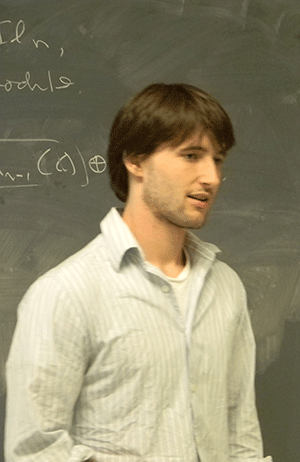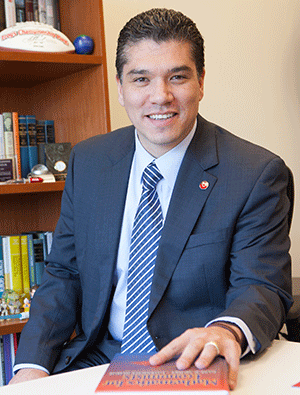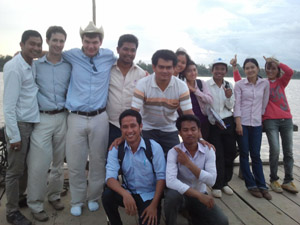From a crowded field of acceptances and scholarship offers, high school senior Stuart Shirrell had narrowed down his college choices to two: a prestigious private school located on the East Coast, and the University of Arkansas. He decided to place a call to professors he’d like to work with at each university. Shirrell recalls that he “got blown off” by the professor at the private school; fortunately, at the U of A he reached Javier Reyes, an associate professor of economics who now serves as vice provost for distance education. “Dr. Reyes talked to me for a while, even before we met,” Shirrell recalls. “That phone conversation was what sold me on Fayetteville.” Reyes was impressed by the phone call, but when the two met in person, he realized that Shirrell could help in visualizing a tricky aspect of his research.
“Stuart was looking at my shelf, where I had my economics books. I could tell from the questions he asked that he already had a good grasp of the literature, and he wanted to learn about modeling in economics. So I asked him, how good are you in math?” Reyes grabbed Simon and Blume’s Mathematics for Economists, the standard text on the subject, and flipped to the table of contents. Shirrell browsed through the chapter headings, checking off topics familiar and mastered.
“I told him, you have such skills in mathematics and critical thinking in economics, that I think you could fit in perfectly on a project I’m working on,” Reyes said. “If you come here, you’ll be working on research on day one, if you want to.”
Shirrell did elect to attend the University of Arkansas on a Bodenhamer Fellowship, and he began working with Reyes his first semester. Their collaboration yielded two papers. One of them, coauthored by Reyes, economics professor Raja Kali, and graduate student Josh McGee, will be published in the March 2013 issue of the Journal of Development Economics. The paper, titled “Growth Economics,” examines the relationships between product clusters in international trade and their connection to accelerated economic growth at the country level. The UA team’s findings help to explain why some countries experience accelerated economic growth and how that growth is related to trade.
The research, which involved mapping the relationship between all products in the global trade network and specific products exported by individual countries, involved a considerable amount of data crunching. Shirrell was a key player on the team, Reyes said: “He could provide strategies on how to look at the data, show us what the network looked like, and how it was changing over time.”
“It was a pretty significant challenge,” Shirrell said. “Dr. Reyes gave me some skills that I use in my job everyday – how to use a software called STATA, which is widely used among economists; the ability to program; and how to think critically about a research agenda.”
Reyes is currently preparing a second paper on networks, coauthored with Shirrell and a colleague at Portland State University, for publication.
And Shirrell? After completing his B.S. in mathematics, magna cum laude, he decided to step away from academia for a little while. Since March, he has been working with IDinsight, a start-up non-profit that seeks to change the way the public sector uses data to make decisions about social programs. He helped design and test ways to improve use of funds in a child nutrition program in Bihar, India and is currently analyzing the effect of microfinance loans on a rural sanitation program in Cambodia. After that, he’ll move on to Uganda to work with the Ministry of Health on a malaria program.
“There are a lot of minute details you have to think about when designing randomized control trials – if you change one thing or another, it changes your results,” Shirrell said. “My work with Dr. Reyes really prepared me for the work I’m doing now.”



